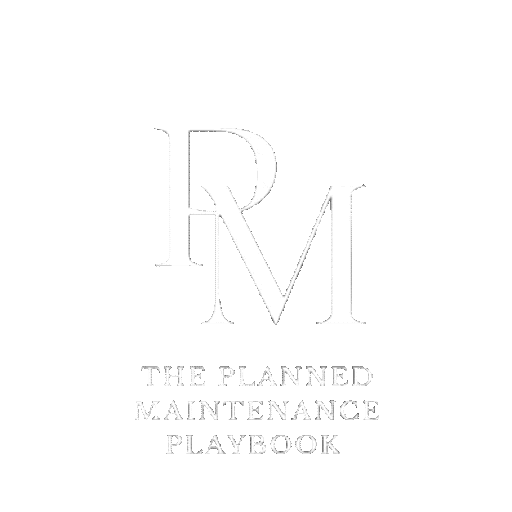Asset-intensive organisations must align their maintenance strategies with business goals in a fast-evolving industrial environment. Central to this alignment is criticality analysis—a structured, data-driven process to rank and prioritise equipment based on its impact on operations, safety, environment, and cost. Drawing from empirical research and industry best practices, this guide presents a practical, technical approach for maintenance and reliability engineers to embed criticality into their maintenance prioritisation.
What Is Equipment Criticality?
Equipment criticality measures the impact that equipment failure would have on an organisation. It informs how maintenance resources are allocated and which assets warrant proactive strategies such as predictive maintenance. The defined methodology enables the classification and prioritisation of the manufacturing assets based first on the analysis of the failure impact that defines its category and, subsequently, on three quantitative criteria which enable to definition of its subcategory (Teixeira et al., 2024).
Key Criteria (Weighted):
- Safety (S) – Potential for harm to personnel (40 points max)
- Environment (E) – Risk of spills or emissions (40 points max)
- Quality (Q) – Defect creation or rework
- Throughput (T) – Production loss or line stoppage
- Customer Service (CS) – Order delays or fulfilment impact
- Operating Cost (OC) – Repair or replacement costs
Total Consequence (TC) is calculated as:
TC = S + E + Q + T + CS + OC
The Relative Risk (RR) is then:
RR = TC × Probability of Failure (PoF)
Example Scale for PoF:
1 = <1 failure per 10 years
5 = 1 failure every 5 years
10 = Failure every month(Smith et al., n.d.).
Why It Matters
Research shows that while 67% of companies prioritize maintenance work orders, only 35% have a formal criticality assessment process in place (Gopalakrishnan & Skoogh, 2018).
Without it:
- Priorities default to technician judgment
- Maintenance becomes reactive and inconsistent
- Resources may be wasted on non-critical assets
A robust criticality assessment:
- Focuses resources where they’ll prevent the most loss
- Improves system-wide productivity by targeting bottlenecks
- Reduces downtime across the production chain (Gopalakrishnan & Skoogh, 2018).
Steps to Conduct a Criticality Review
Step 1: Establish Evaluation Framework
Use a cross-functional team (Ops, Eng, EH&S) to define scoring scales and weighting. Include both objective metrics (e.g., MTBF, downtime cost) and qualitative criteria (e.g., safety).
Step 2: Score Equipment
Each asset receives a 1–10 score for each consequence category and PoF. Safety and environment often receive higher max weights (e.g., 40 points). Use CMMS data and interviews to fill gaps.
Step 3: Classify Equipment
Use thresholds to group assets:
- A-Class (Critical): TC ≥ 38 or any category = 10
- B-Class (Moderate): TC ≥ 20 or any category ≥ 6
- C-Class (Low): TC < 10
Step 4: Integrate with CMMS
Include criticality score/class in asset records. Link to:
- PM task frequencies
- Spare part stocking levels
- PdM deployment (vibration, IR, oil analysis)
Industry Findings: Reality vs. Practice
Empirical studies show that most firms rely on operator experience to determine maintenance priority, even when ABC classification systems exist (Gopalakrishnan & Skoogh, 2018). Maintenance technicians often override CMMS priorities based on situational urgency, highlighting the gap between planning and execution.
Simulation models reveal that prioritising bottleneck machines can increase throughput by up to 11.2%, simply by executing maintenance tasks in a smarter order—no extra resources needed (Gopalakrishnan & Skoogh, 2018).
Visualising Risk: Heatmap Matrix
| Probability Impact | Low (1–3) | Medium (4–6) | High (7–10) |
| Low (1–3) | Low | Medium | High |
| Medium (4–6) | Medium | High | Very High |
| High (7–10) | High | Very High | Critical |
Downloadable Tools
Pitfalls to Avoid
Static assessments: Update annually or after major changes
Lack of system view: Prioritize assets by how they affect the entire production line, not just local impact
Operator bias: Use data to validate gut decisions
Conclusion: Moving to a Data-Driven System
As maintenance shifts toward digitalization and predictive strategies, criticality analysis must evolve from static lists to real-time, dynamic decision support tools. By adopting a systemic, data-informed, and collaborative approach, organizations can unlock productivity and reliability improvements across the board.
Need help getting started? Reach out for training, templates, or implementation support.
Sources:
Gopalakrishnan, M., & Skoogh, A. (2018). Machine criticality based maintenance prioritization: Identifying productivity improvement potential. International Journal of Productivity and Performance Management, 67(4), 654–672. https://doi.org/10.1108/IJPPM-07-2017-0168
Smith, R., Gpallied, C., & Martin, D. (n.d.). Track 6 (CMRT): 10 Maintenance and Reliability KPIs You Need to Know and Use CMRP Louisiana Offshore Oil Port.
Teixeira, H. N., Lopes, I. S., & Pires, R. N. (2024). Maintenance Strategy Selection: An Approach Based on Equipment Criticality and Focused on Components. Lecture Notes in Mechanical Engineering. https://doi.org/10.1007/978-3-031-38165-2_1
